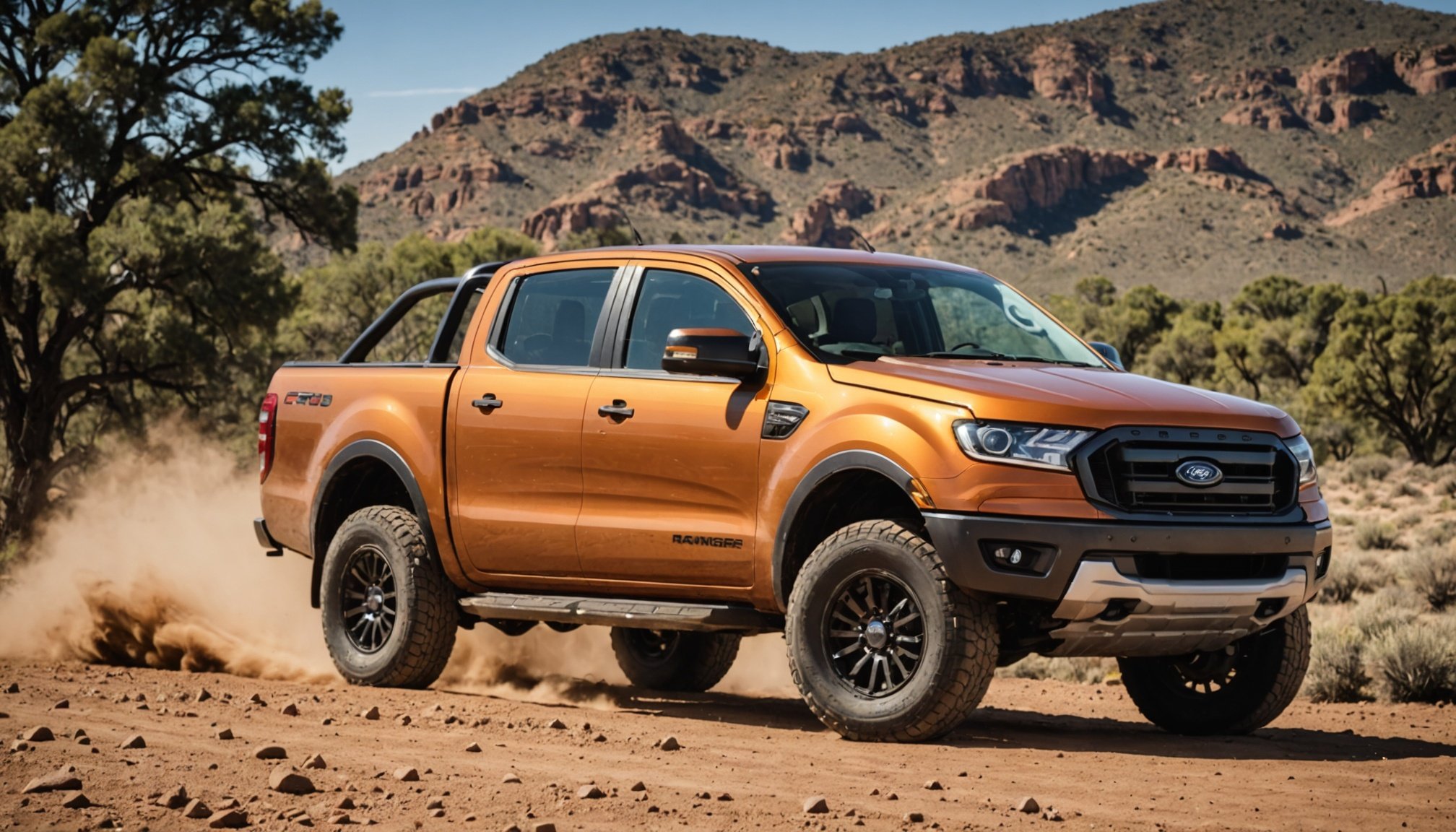Benefits of Upgrading Brake Lines for Ford Ranger
Upgrading brake lines in a Ford Ranger lends a rewarding enhancement to driving performance. Primarily, the brake line upgrade benefits centre around improved brake responsiveness. Factory brake lines can sometimes lead to a soft pedal feel due to their potential to expand under pressure. In contrast, upgraded lines such as those made from stainless steel are designed to resist expansion. This can lead to an immediate improvement in brake pedal feel and responsiveness.
Furthermore, enhanced braking performance is prevalent across diverse conditions. Whether driving in the city, on highways, or off-road, the enhanced durability of stainless steel lines makes them resistant to wear and tear. This resistance is vital for maintaining consistent braking power, which is crucial for ensuring safety.
In the same genre : Step-by-Step Guide: Installing a Dual-Clutch Transmission for Effortless Shifting in Your Volkswagen Golf GTI
Additionally, for those who frequently engage in heavy towing or hauling, the increased durability of upgraded brake lines provides more reliability. This ensures enhanced safety and performance even when dealing with increased vehicle weight or challenging terrains.
The overall enhanced safety provided by upgrading brake lines makes it a practical investment. It offers peace of mind, knowing that the brake system is better equipped to handle the demands of daily driving or more rigorous tasks.
Also to discover : The Ultimate Guide to Installing a Remote Start System in Your Chevrolet Silverado for Maximum Convenience
Types of Brake Lines
Various types of brake lines are available, each with different attributes affecting vehicle performance, safety, and reliability. Understanding the nuances between stainless steel and rubber brake lines helps in making informed decisions.
Stainless Steel Brake Lines
Primarily known for their durability, stainless steel brake lines enhance braking performance by offering superior pressure resistance and minimal expansion. They are ideal for high-performance and racing applications due to their ability to withstand high temperatures without compromising on heat dissipation. The braided exterior contributes to a consistent brake pedal feel, crucial during intense braking scenarios. However, stainless steel brake lines come at a higher cost than rubber options, reflecting their enhanced longevity and reliability.
Rubber Brake Lines
Rubber brake lines are frequently used due to their flexibility and affordability. These lines provide adequate performance for everyday driving situations and are less prone to corrosion. However, their rubber composition is susceptible to swelling and wear over time, leading to potential brake fade under extreme conditions. Regular maintenance and timely replacement of rubber brake lines are necessary to ensure continued safe braking performance.
Comparison of Materials
- Durability and Flexibility: Stainless steel boasts better durability, while rubber lines offer flexibility.
- Performance Differences: Stainless steel lines offer superior heat dissipation and performance consistency.
- Cost vs. Value Analysis: While more expensive, stainless steel lines provide better value for long-term use. Rubber lines are cost-effective but may require more frequent replacements.
Installation Process
Embarking on a DIY brake line installation can be a rewarding yet challenging task. To ensure a smooth process, it’s crucial to familiarize yourself with a step-by-step guide, necessary tools, and safety precautions. Begin by gathering essential tools, which typically include a brake line flaring tool, tubing bender, line wrenches, and a cutter. Also, ensure you have protective eyewear and gloves to enhance safety throughout the process.
Step-by-Step Installation Process Overview
The brake line installation process hinges on careful planning and precision. Start by safely elevating the vehicle and removing any tires to access the existing brake lines. Carefully inspect the lines for damage or rust before proceeding. After verifying the condition, remove the old brake lines using a line wrench to prevent stripping the fittings. Install the new lines by following the vehicle’s manufacturer guidelines, ensuring each connection is tight and secure.
Necessary Tools and Safety Precautions
When working with brake lines, safety is paramount. Handle tools like the tubing bender with care, as improper use can lead to hazardous situations and potential damage to the brake lines. Regularly check the tools for any wear and tear before use, and maintain a clean workspace to avoid accidents.
Troubleshooting Common Installation Issues
In case of installation issues, such as leaks or improper fits, double-check connections for tightness and ensure the flare is seated correctly. If persistent problems arise, reviewing the DIY guide can provide insights or troubleshoot suggestions to aid in the resolution.
Performance Improvements
Enhancing braking power isn’t just about stopping a vehicle more quickly; it revolutionises the entire driving experience. A notable impact of improved braking power is the reduction in overall vehicle stopping distance. Integrating advanced technologies, such as enhanced braking systems, significantly shortens the distance required for a complete stop, thus providing drivers with increased safety margins.
Apart from absolute stopping power, braking system upgrades also affect braking modulation and control. They allow for more precise maneuvering, especially crucial in adverse conditions like rain or snow. This control enhancement gives drivers more confidence, enabling them to react correctly in real-time driving scenarios.
Real-world user experiences underscore these benefits eloquently. Many drivers who have invested in performance upgrades recount their appreciation for the newfound responsiveness and sense of security. For instance, a satisfied user reported that after upgrading their vehicle’s brakes, they experienced enhanced stability and were particularly impressed by how their car handled in emergency situations.
These testimonials highlight the value of investing in performance upgrades, not only to boost safety but also to improve driving pleasure by delivering a smoother, more controlled ride.
Safety Considerations
When it comes to ensuring car safety, the condition of the braking system plays a significant role. Regular inspection and maintenance become crucial, especially concerning brake lines. Brake safety isn’t just a term but a pivotal aspect of vehicle upkeep where regular checks can avert potential accidents.
Understanding the Importance of Brake Line Inspections
Routine inspections are vital. They help in identifying wear and tear, or potential leaks in brake lines. Brake fluid leaks or any visible damage often signal the necessity for a thorough examination. This preventive action not only extends the lifespan of the system but also significantly contributes to the overall safety of the vehicle.
Signs Indicating the Need for Brake Line Upgrades
Look out for certain signs like diminished braking efficiency, spongy brake pedals, or unusual noises. These indicate that your brake lines might require an upgrade. It’s essential for ensuring the braking system’s optimal performance and, consequently, your safety.
Recommended Maintenance Practices for Upgraded Systems
Even after upgrading, it’s essential to continue regular inspections. Routine checks and maintaining the right brake fluid levels ensure the upgraded systems function effectively. Staying vigilant and prompt in addressing these concerns can substantially enhance brake safety.
User Testimonials and Case Studies
In exploring the real-world performance of brake line upgrades, user experiences provide valuable insight into their effectiveness. These user experiences often highlight significant performance enhancements and safety benefits, particularly in demanding driving conditions.
User feedback indicates a noticeable improvement in braking responsiveness and stability. One such testimonial comes from an amateur race car driver who upgraded their brake lines to stainless steel. They reported a substantial improvement in brake pedal feel and modulation, especially under high heat conditions. This real-time feedback underscores how critical these modifications can be for those who drive under heavy load or participate in motorsports.
Case studies further emphasize performance gains through brake line upgrades. In one study, a group of off-road enthusiasts fitted their vehicles with high-performance brake lines. The result was not only improved braking power but also greater resistance to wear and tear from harsh environments. This showcases that even in rugged conditions, investing in quality brake line upgrades leads to tangible benefits.
Analysis of these user experiences reveals a consensus on the value of brake line modifications. While individual results can vary, the collective evidence suggests that those looking for enhanced real-world performance can significantly benefit from such upgrades.
Understanding Brake Lines and Their Functionality
Brake lines are a vital component within a vehicle’s braking system, and their functionality is directly tied to the braking efficiency and performance you depend on for safety. Essentially, the role of brake lines is to transport hydraulic fluid from the master cylinder to the brake calipers or wheel cylinders. This process creates the needed hydraulic pressure essential for engaging the brakes effectively.
In a hydraulic brake system, the conversion of force from the driver’s foot on the brake pedal into hydraulic pressure is what allows the braking mechanism to function. This pressure forces brake pads against the rotors, ultimately slowing the vehicle down. The integrity and efficiency of this system heavily rely on the condition and quality of the brake lines involved.
Quality materials used in brake line construction are crucial. Durable materials such as stainless steel or high-grade rubber can withstand extreme pressures and resist wear and corrosion over time. This ensures consistent delivery of hydraulic fluid, maintaining optimal braking performance. When brake lines are compromised due to inferior materials or age, the result can be a significant drop in braking efficiency, risking safety by increasing stopping distances or leading to brake failure. Understanding this relationship helps highlight why regular inspection and maintenance of brake lines are critical.
Benefits of Upgrading Your Ford Ranger’s Brake Lines
Enhancing the brake lines of your Ford Ranger can lead to a significant improvement in both performance and safety. One of the primary benefits is an enhanced braking response and pedal feel. Upgrading brake lines ensures a more direct connection between your foot and the braking system, providing immediate feedback and reducing the soft or spongy pedal feel associated with older lines.
Increased safety is another noteworthy advantage. Upgraded brake lines reduce the risk of brake fade, a dangerous condition where brakes lose effectiveness during prolonged use. This issue is especially prevalent in demanding driving conditions such as steep descents or high-speed travel. By minimizing brake fade, these enhanced lines ensure your vehicle maintains optimal stopping power when you need it most.
Furthermore, the durability of upgraded brake lines cannot be overstated. Many come with improved resistance to environmental factors like extreme temperatures, moisture, and road debris. This adds a layer of reliability, reducing the frequency of replacements and maintenance checks. Enhanced safety, improved performance, and long-lasting durability make upgrading your Ford Ranger’s brake lines a worthwhile investment, guaranteeing peace of mind on every drive.
Installation Tips for Upgrading Brake Lines
Embarking on a brake line installation project requires preparation and attention to detail. Having the right approach and tools is crucial to ensuring a successful upgrade.
Required Tools and Equipment
Start by gathering essential equipment for brake line installation. A tube bender is critical for shaping the brake lines properly, while a flaring tool ensures secure connections. Wrenches, specifically a line wrench, will prevent damage to fasteners. Additionally, having a brake fluid reservoir is necessary to manage fluid during the installation.
Step-by-Step Installation Process
Begin by safely elevating and supporting your vehicle. Remove the old brake lines by carefully loosening the fittings using a line wrench. Once removed, compare new brake lines with the old ones to ensure correct length and shape. Use a tube bender if adjustments are needed. Install the new lines by connecting and tightening the fittings with care. Make sure to bleed the brakes after installation to remove any air from the system.
Common Installation Mistakes
One frequent mistake in brake line installation is neglecting to use proper tools, leading to stripped fittings or leaks. Always avoid overtightening connections which can cause damage. Another pitfall is failing to properly bleed the brakes, resulting in a spongy brake pedal. Ensuring a secure fit of the brake lines can prevent these issues.
OEM vs Aftermarket Brake Lines: A Comparison
Exploring the difference between OEM brake lines and aftermarket options is crucial for making informed decisions about vehicle maintenance. Original Equipment Manufacturer (OEM) brake lines are designed by the same company that manufactured your vehicle. This often means they cater perfectly to its specifications, offering a seamless fit and factory-level performance. Drivers commonly choose OEM brake lines for their reliability due to strict quality controls, which can translate into enhanced safety and comfort on the road.
However, aftermarket options present an enticing alternative. Often crafted by third-party companies, these brake lines cater to various needs and preferences, offering flexibility in performance and design. Enthusiasts might opt for aftermarket solutions to enhance brake response, improve durability, or even achieve a particular aesthetic. Still, variability in quality among aftermarket products can pose reliability issues, making it crucial to choose reputable brands.
Cost is another factor that significantly influences the decision between OEM and aftermarket brake lines. Typically, OEM options tend to be more expensive, reflecting their precision engineering and brand assurance. In contrast, aftermarket alternatives often provide a more economical choice, sometimes even offering improved performance benefits, a boon for cost-conscious drivers seeking both savings and upgrades.
Cost Analysis of Upgrading Brake Lines
When considering brake line costs, it’s essential to examine the typical expenses involved in such an upgrade. The overall costs can vary significantly based on several factors, starting with the type of materials used. For instance, stainless steel lines are generally more expensive than rubber ones but offer greater durability and performance, leading to increased value of upgrades in the long run.
Vehicle model is another key factor influencing the cost. Some cars require specialized parts and custom fittings, increasing the costs. Installation methods can also vary whether done DIY or by a professional mechanic, affecting the budget considerations. A professional installation is more costly, but it can ensure the job is done safely and correctly.
While the initial investment might seem steep, the value of upgrades often manifests through long-term savings and improved performance. Enhanced performance means better braking efficiency and therefore, possibly fewer repairs or changes needed in the future.
Therefore, when pondering brake line costs and budget considerations, it is vital to weigh these upfront costs against the potential performance benefits and eventual savings, ensuring you make an informed decision tailored to your vehicle’s needs and your budget.
User Testimonials on Brake Line Upgrades
In their user reviews, Ford Ranger owners frequently highlight the transformative impact of brake line upgrades. These real-world experiences offer a wealth of insights into the practical benefits these modifications bring. Notably, Ford Ranger enthusiasts consistently praise the improved braking performance. The overall difference in responsiveness and stopping power is a common thread in such discussions.
Many users report a noticeable enhancement in their vehicle’s braking efficiency. This is especially true when navigating challenging terrains or during rush-hour commutes, where quick and reliable braking is crucial.
Experience Sharing
One major theme in experience sharing revolves around safety improvements. Many Ranger owners are vocal about feeling more secure, especially during sudden stops or emergency braking scenarios. There’s consensus that these upgrades not only augment performance but also significantly bolster the driver’s confidence on the road.
Performance Feedback
Performance feedback tends to emphasize the smoothness and predictability of the braking system post-upgrade. Users often express satisfaction with the consistency in brake pedal feel and response. Importantly, drivers note that these enhancements extend the longevity of other brake components, thus proving to be a wise, long-term investment.
Such firsthand accounts provide a comprehensive view of the advantages, showcasing how these seemingly small modifications can lead to substantial improvements in driving safety and pleasure.
Visual Aids for Understanding Brake Line Upgrades
For DIY enthusiasts, visual aids are essential tools to improve understanding of brake line upgrades. These aids provide a clearer perspective than textual descriptions alone. Installation diagrams simplify complex processes, enabling enthusiasts to execute tasks with precision and confidence.
Examples of Visual Aids
Several resources offer brake system illustrations that detail every component and its respective location. Diagrams showing step-by-step installation processes are invaluable, as they highlight key actions and precautionary measures. Similarly, online platforms feature comprehensive installation videos, visually guiding you through each step of the upgrade process. These resources prevent costly errors and ensure that hobbyists can follow along without missing important details.
Further Learning and Resources
For those eager to deepen their knowledge, the internet is rife with additional learning materials. Websites devoted to car maintenance offer a plethora of diagrams and often include forums where you can ask questions and share experiences. Sites such as YouTube host an array of instructional videos tailored to various vehicle models. Additionally, manuals and books are available for purchase, offering a balance between visual and textual guidance. As with any DIY task, having access to a variety of visual tools not only boosts the likelihood of successful upgrades but also enriches the learning experience.











